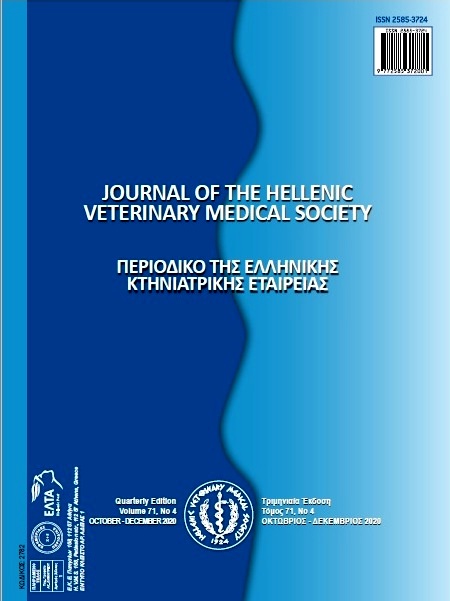Determinant and conditioning factors of feline asthma: a questionnaire-base study

Abstract
Feline asthma is a chronic inflammatory disease of the lower respiratory airways that has shown an increased incidence in the past decades, aside with human asthma. It is also important to acknowledge that human and feline asthma are very similar in their pathophysiology,being the housing conditions (pollutants, stress and obesity) major risk factors to its development. The present study aimed to investigate if these housing conditions could be determining and conditioning factors associated with the occurrence of feline asthma previously reported in literature. A cross-sectional (self-completed) questionnaire-based study targeting Portuguese-speaking owners of cats was carried out, validated and applied (in both paper and digital form) between September 2018 and March 2019. A total of 189 questionnaires were analysed, of which 18 corresponded to cats with respiratory disease. Most of studied cats were of mixed breed and neutered, living indoor exclusively, mainly in urbanareas and from the north mainland region. According to the owner’s perception, the cats were mostly active and with the ideal weight. The clinical signs more often associated with asthma crisis were respiratory wheezes and cough, whereas the worsening of such clinical signs occurred mostly in spring. Stress symptoms were not common, but the correlation between stress-related diseases and asthma was close to significance (P=0.065). A mixed lifestyle was associated with less symptoms of stress (P=0.032). Although close to significance (P=0.07), the presence of pollutant industries was not associated to asthma in the enrolled cats. Finally, in most of the houses in which an asthmatic cat lived in, no owner or other co-inhabitant had asthma. The paucity of similar epidemiological studies in cats demonstrates the importance of the current work and the need to conduct further studies on housing conditions associated with the disease. Eventually, further studies will clarify if cats could be used as sentinels for human asthma.
Article Details
- How to Cite
-
RODRIGUES, j., CAROLINO, N., NUNESD, f., & DUARTE, S. C. (2021). Determinant and conditioning factors of feline asthma: a questionnaire-base study. Journal of the Hellenic Veterinary Medical Society, 71(4), 2559–2568. https://doi.org/10.12681/jhvms.25940
- Issue
- Vol. 71 No. 4 (2020)
- Section
- Research Articles

This work is licensed under a Creative Commons Attribution-NonCommercial 4.0 International License.
Authors who publish with this journal agree to the following terms:
· Authors retain copyright and grant the journal right of first publication with the work simultaneously licensed under a Creative Commons Attribution Non-Commercial License that allows others to share the work with an acknowledgement of the work's authorship and initial publication in this journal.
· Authors are able to enter into separate, additional contractual arrangements for the non-exclusive distribution of the journal's published version of the work (e.g. post it to an institutional repository or publish it in a book), with an acknowledgement of its initial publication in this journal.
· Authors are permitted and encouraged to post their work online (preferably in institutional repositories or on their website) prior to and during the submission process, as it can lead to productive exchanges, as well as earlier and greater citation of published work.


